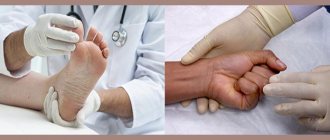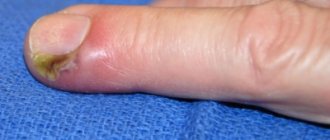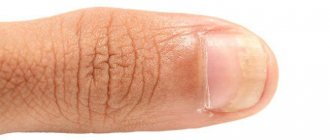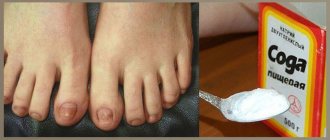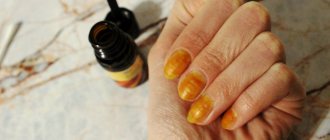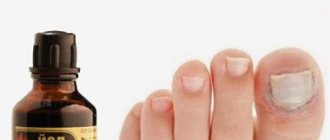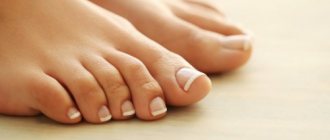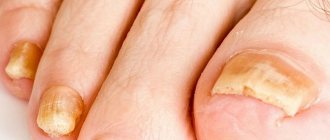Nail fungus or onychomycosis (medical name) is a disease that occurs when the nail plate is affected by a fungal infection. Onychomycosis affects 5 to 15% of people. The risk of its development increases with age, although the fungus is often detected in children. Every 10 years of life, the incidence increases 2.5 times. If in children it is 3%, then in older people it is already 50–60%.
Pathogens
Onychomycosis is caused by microorganisms from the kingdom of Fungi. The world of mushrooms is diverse, and not all of them are as pleasant as champignons, chanterelles or honey mushrooms, which we are used to seeing on our table. There are microscopic parasitic species that feed on the tissues of plants, animals, and humans.
The causative agents of onychomycosis consume the protein keratin, which is part of the nail plate, hair, and the upper (keratinized) layer of skin. About 50 representatives of parasitic fungi are known that can cause the disease.
They are divided into three groups:
- Dermatophytes. They account for 80% of onychomycosis cases. They are characterized by high survival and viability. Found naturally in soil;
- Yeast-like mushrooms. Among them is Candida albicans (microorganisms of the genus Candida), known to women, which causes thrush or vaginal candidiasis. Yeast-like fungi are 5 times more likely to affect fingernails than toenails. Toxic and impair the functioning of the entire body;
- Mold fungi. Onychomycosis caused by molds is rare. But it is the most dangerous, it progresses quickly, it can completely destroy the nail plate and spread to neighboring tissues.
Onychomycosis affects the fingernails and toenails, but toenail fungus is much more common on the feet. This is due to the fact that hands are given much more attention, washed more often during the day, and treated with antiseptics. They are always open and well ventilated except in winter when we wear gloves. And your feet are constantly covered with street shoes, house slippers, tights, socks, and they sweat more. These factors create ideal conditions for the development of foot fungus, because heat and moisture are its best “friends.”
The causative agent of onychomycosis penetrates the nail from different directions. The most common way is from above, from the side of the free edge of the nail plate. It is also possible to introduce it from the side from the side ridges or from below from the cuticle and nail growth zone.
Onychomycosis is most dangerous near the cuticle. In this case, the fungus slows down or stops the division of onychoblasts - cells of the growth zone under the lower nail fold. The nail stops growing in length, and the infected areas may not recover. A pathological change in the structure and destruction of the nail occurs.
Fungi rarely penetrate directly into the nail plate. First, their spores enter the skin around the nail or the spaces between the fingers through microcracks, cuts, abrasions, abrasions, and calluses. Then the colony begins to grow, the pathogen moves towards the nail plate, penetrates it and begins to parasitize.
Why does onychomycosis appear?
Fungi live in warm and humid places, and wherever such conditions exist, it is easy to become infected with them. For example, if you walk barefoot in public baths, swimming pools, showers or gym locker rooms, your chances of becoming infected are high.
Some diseases contribute to the development of onychomycosis:
- Diabetes. In patients with diabetes, the fungus is 3 times more common. Excess glucose in the blood creates favorable conditions for fungi to function. In the absence of sugar control and keeping it within normal limits, blood vessels suffer. The longer the illness, the more impaired the blood supply to the legs (diabetic foot syndrome). Wounds heal worse, infection occurs more easily;
- Poor blood circulation in the lower extremities caused by varicose veins, atherosclerosis (narrowing of the lumen, blockage of the arteries), thrombophlebitis (formation of blood clots in the lumen of the veins);
- Weakened immunity, immunodeficiency states (HIV), damage to the immune system. Reduce the body's resistance to any infections;
- Psoriasis. 90% of people suffering from psoriasis experience changes in the nail plate. Grooves form on it, cloudiness is present, depressions appear, and detachment of the nail plate appears. These factors increase the chances of infection with a fungus by 1.5 - 2 times;
- Hyperhidrosis, or excessive sweating of the feet, often causes onychomycosis in men;
- The presence of a focus of fungal infection in other parts of the body.
The risk group includes older people.
The cause of onychomycosis is often associated with the characteristics of the profession and improper care of the feet:
- poor care of feet and nails, lack of daily hygiene procedures due to neglect of personal hygiene rules or difficulties in their implementation (in bedridden patients or patients with limited mobility);
- work in damp, damp areas (greenhouses, greenhouses, vegetable stores), frequent wearing of rubber gloves or rubber shoes;
- professional sports;
- wearing uncomfortable, tight, narrow shoes or shoes made of artificial materials (leatherette), which creates a “greenhouse effect” and interferes with normal air exchange.
Predisposing factors for the development of onychomycosis include trauma to the nail or surrounding tissues, taking antibacterial or hormonal drugs.
In women, a common cause of fungus is prolonged wearing of gel polish. It creates a closed space between the nail plate and the coating, in which a fungal infection successfully develops. It is not recommended to apply gel polish to toenails; it is better to use regular decorative polish. Also, in women, onychomycosis appears after an unsuccessful manicure or pedicure in salons where high-quality disinfection of instruments is not carried out and sterility is not maintained.
What is foot fungus
Foot fungus is a form of mycosis in which the causative agent of the pathology affects the epidermis of the foot, and in the absence of qualified and timely therapy, spreads to the nails, as well as to other parts of the body. The occurrence of pathology is provoked by infection of the epidermis with various types of fungus.
When certain conditions are created, pathogens can parasitize inside the body, as well as on the skin and nail plates. As a result of the activity of these harmful microorganisms, local and systemic pathologies arise.
The disease is characterized by a structural change in the epidermis. The symptoms of the disease depend on the type of fungus. Common symptoms are itching of the epidermis, peeling, and keratinization of the skin.
At the first signs of foot fungus, it is recommended to consult a specialist. Timely and correct therapy will help get rid of the pathology in a short period.
Signs of onychomycosis
Most often, the fungus infects the big toes.
The following changes in the nail plate indicate a fungal infection:
- dullness, yellowing, loss of smoothness and shine;
- itching, redness, peeling of the skin around;
- delamination, fragility, friability;
- unpleasant odor;
- violation of the structure, thickening;
If you find yourself with at least one of the listed signs, you should immediately consult a doctor who treats nail fungus. This could be a podologist, dermatologist or mycologist.
A mandatory examination by a podiatrist to check for onychomycosis is required after an injury to the nail or the skin around it. If there are predisposing factors (varicose veins, diabetes, atherosclerosis, weakened immunity, excessive sweating of the feet, etc.), it is recommended to have a medical pedicure once a month, during which the doctor will carefully examine the nails and skin of the feet and identify changes in the early stages.
Symptoms and signs of foot fungus
Signs of the disease depend on the type of pathogen. If the disease occurs due to Trichophyton red, then the symptoms will be as follows:
- the causative agent of the disease begins its activity in the interdigital folds, after which it moves to the sole, and in the absence of treatment it affects the nails, large folds of skin and the epidermis on the palms;
- thickening of the skin;
- dryness of the epidermis;
- cracks;
- peeling of the skin;
- itching and burning;
- white spots and stripes on the nail plate.
If the cause of the pathology is the pathogen Trichophyton interdigitalis, then in this case the following symptoms appear:
- the fungus affects the folds between the toes, as well as the entire foot;
- the epidermis is inflamed;
- peeling of the skin;
- allergies in the form of rashes, redness and itching on the face, body, upper and lower extremities;
- The fungus from the foot spreads to the nails, but affects single plates.
When the pathogen of the genus Candida is active, the following symptoms occur:
- swelling of the soft tissues of the foot;
- redness of the epidermis;
- the location of the fungus is surrounded by a dense layer of the epidermis;
- rashes appear on the skin in the form of blisters, inside of which there is serous fluid, as well as ulcers of small diameter.
signs of mycosis of the feet
Is nail fungus dangerous?
Onychomycosis is a disease that causes more psychological discomfort than physical illness. To understand what we are talking about, just look at a photo of toenail fungus on the Internet. It is characterized by a slow course and does not cause pain, fever or other symptoms that require urgent medical attention.
People are in no hurry to treat nail fungus. After all, when the affected area is small, you can paint it with varnish, wear socks or closed shoes in front of strangers. And the problem of psychological discomfort is temporarily solved. But, unfortunately, everything is not so simple. If you do not destroy the fungal infection, it will not disappear anywhere, but will continue to affect the nail. And onychomycosis is contagious. An infected person poses a danger to his family and others.
How to prevent infection?
The best cure for nail fungus is prevention.
To protect yourself from infection you must:
- use medical disinfectants with the inscription GOST (capable of killing onychomycosis, tuberculosis, hepatitis, HIV);
- monitor the condition of the feet and nails, the main rule is that the feet should be clean and dry;
- take care of shoes, regularly disinfect and dry them; it is convenient to use electric dryers for drying;
- treat your feet with drying agents or antiperspirants if your feet sweat a lot;
- in the pool, sauna, and gym locker rooms, do not walk barefoot, but wear rubber flip-flops with closed toes;
- wear comfortable shoes made of natural, breathable materials;
- Do not use other people’s towels, shoes or manicure accessories.
These tips will help you prevent onychomycosis and keep your nails healthy and well-groomed. They are effective not only for the prevention of fungus, but also other problems: ingrown toenails, calluses, corns.
Features of the treatment of onychomycosis
Advertising on TV promises to easily and quickly cure nail fungus with the help of antifungal (fungicidal) creams, solutions, and varnishes. We are promised that “The drugs Lamesil, Exaderil, Mikazan, Mecoderil and others penetrate deeply into the structure of the nail, effectively destroy the fungus, and return the nails to their previous appearance in 2-3 applications.” But why then does such self-treatment of toenail fungus give good results in a maximum of 10% of cases? Because these remedies themselves are effective only in the early stages of the fungus, when the symptoms are not yet obvious and almost invisible.
Manufacturers often lie by saying that the drugs are produced in Europe and contain good active ingredients. In practice, the most effective against nail fungus (onychomycosis) is Clotrimazole (Climbazole). Most drugs are simply very well advertised and cost 2000-5000 rubles, but do not contain Clotrimazole (Climbazole). You cannot buy specialized drugs in regular pharmacies, for 100-1000 rubles, even if it says Clotrimazole (Climbazole), it will not be in the chemical composition since production is very expensive.
This drug is used in podiatry centers and on properly prepared nails. We do not have the right to write the name of the drug, but you can ask us any question here.
Antifungal drugs are the mainstay of treatment for onychomycosis. Without them, no matter how much we would like to, we will not be able to defeat the infection. But they must be used correctly and thoughtfully. Medicine for nail fungus should be applied to a previously treated and prepared nail so that it has the desired therapeutic effect.
The first thing you should do if you suspect onychomycosis is to consult a doctor who will confirm or refute the diagnosis. If necessary, he will prescribe additional examination and treatment. Choosing a remedy for nail fungus based on reviews from the Internet, advice from friends, or advertising on TV will result in wasted time and money spent on unnecessary drugs. The same results will be obtained when trying to treat onychomycosis with traditional methods. Vinegar, garlic, onions, and medicinal herbs are not able to destroy the pathogen.
An important point in the treatment of onychomycosis is the disinfection of shoes and clothing that have been in contact with the infected area. If you do not do this, you can become infected again from your own things. Clothes must be washed at high temperatures (above 60 °C), ironed, and shoes must be treated with special disinfectants.
How to treat foot fungus?
If this type of mycosis occurs, the doctor prescribes complex treatment. Only a comprehensive impact on the causative agent of the pathology gives a positive result.
Medical preparations ointments creams and oils
Pharmacies offer many medications to treat the disease. Below are the most effective ones:
- Lamisil. Antifungal cream, the main active ingredient of which is terbinafine. The drug helps to get rid of even an old disease. Used for therapeutic and prophylactic purposes.
- Levomekol. Release form: ointment. Levomekol is recommended for use in various forms of mycosis, as well as for the treatment of certain types of lichen. The product destroys the pathogen, promotes the restoration of damaged soft and bone tissue, and also improves the activity of the sebaceous glands.
- Stop asset. It is an oil that has an antifungal effect. The composition contains only natural ingredients, which makes the product safe for health. The product destroys harmful microorganisms, relieves itching and flaking, and also helps relieve swelling of soft tissues.
- Exoderil. An antifungal agent whose main active ingredient is naftifine hydrochloride. Release form: ointment and drops. The drug is prescribed both in the initial stages of the disease and in the old form of the pathology.
- Clotrimazole. Available in ointment form. The drug helps get rid of various types of mycosis. To enhance the effect of the drug, it is also recommended to take tablets of the same series.
Antifungal tablets
The treatment regimen for the pathology also includes taking antifungal drugs orally. Typically, the following drugs are prescribed for the treatment of the disease:
Fluconazole. Tablets with antifungal properties that block the activity of the pathogen. The dosage and duration of therapy are prescribed by the doctor, based on the type of pathogen and the subjective characteristics of the patient. Stop Fungus (Biopag D). The main active component of the product is guanidine. The drug is intended for oral administration. The dosage is selected by the doctor, the therapeutic course is 7 days.
Effective folk remedies
To increase the effectiveness of treating foot fungus at home, it is recommended to use alternative medicine products. Such drugs cannot be used for independent therapy. The drugs only enhance the effect of pharmaceutical products.
Infusion based on calendula
To prepare such a product, you need the following components:
- calendula flowers – 1 cup;
- water – 1 glass.
The plant is poured with boiling water, the container is closed with a lid and left for half an hour. Next, the infusion is filtered. The drug is used to treat the affected epidermis before a night's rest. The product is not wiped off or washed off. The period of therapy is until recovery.
Garlic ointment
To prepare the product take:
- chopped garlic – 1 part;
- butter – 1 part.
The products are mixed and placed in a glass jar with a lid. The product is stored in the refrigerator. The product is applied to the epidermis before night rest. After this, cotton socks are put on your feet, and the compress is kept until the morning. After this, the feet are rinsed with water.
Hardware treatment of fungi
If classical treatment for foot fungus, carried out at home, does not bring the desired result, laser therapy is prescribed. The essence of the manipulation is laser treatment of damaged epidermis and nail plates. As a result of this, the causative agent of the disease dies. To increase the effectiveness of laser therapy, the doctor may prescribe antifungal drugs for oral and topical use.
foot fungus

